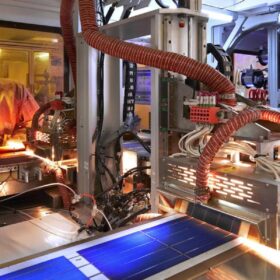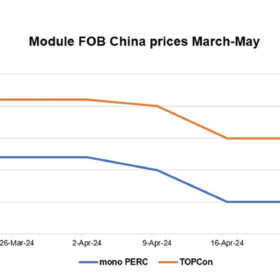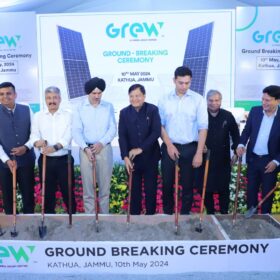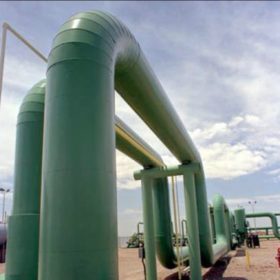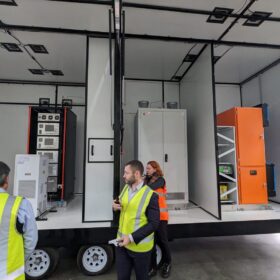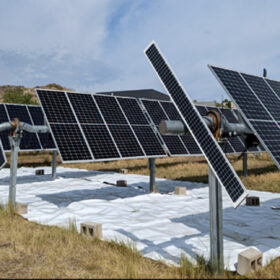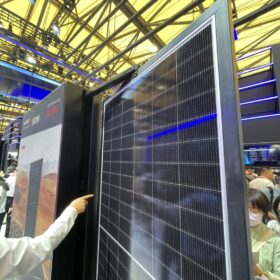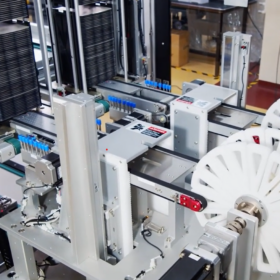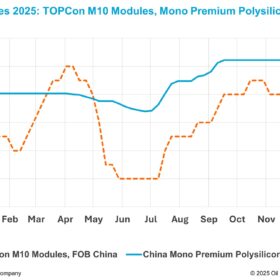Trina Solar records 65.21 GW of solar panel shipments for 2023
Trina Solar says its solar panel shipments reached 65.21 GW in 2023. The Chinese module maker achieved a turnover of $15.75 billion and a net profit of $768.2 million in fiscal 2023, with an annual module production capacity of 95 GW by the end of December.
Chinese solar module prices hold steady in a quiet market
In a new weekly update for pv magazine, OPIS, a Dow Jones company, provides a quick look at the main price trends in the global PV industry.
Grew Energy all set to establish 3.2 GW solar module factory in Jammu & Kashmir
Grew Energy broke ground on its solar ingot-to-module factory in Jammu & Kashmir. The facility will have the capacity to produce 2.8 GW of ingots, wafers and cells and 3.2 GW of high-efficiency PV modules per year.
The Hydrogen Stream: Asahi India Glass signs 20-year green hydrogen off-take agreement with INOX Air Products
INOX Air Products will build and operate a green hydrogen plant with a capacity of 190 tonnes per annum (TPA). The plant will supply 95 TPA of green hydrogen to Asahi India’s float glass manufacturing facility in Rajasthan in the first phase.
Solar-hydrogen solution rolled out for off-grid settings
A new mobile power generator that combines solar and renewable hydrogen to provide zero-emissions power for remote and off-grid applications has been unveiled by Australian startup H2PowerBox.
Grew appoints Hiten Parekh as president-Global Sales
Hiten Parekh has previously held key positions at O2 Power, Navitas Solar, SunEdison, and SolarSquare.
Research shows high-albedo ground reflectors increase bifacial solar plant yield by up to 4.5%
Tests conducted by Canadian researchers at the NREL’s testing field in Colorado have shown that ground reflectors based on high-density polyethylene can significantly increase bifacial PV plant performance. They stressed the profitability of this technology is strictly dependent on the location and warned avoiding to combine it with inverter clipping.
China’s clean tech dominance threatens global market stability
The influx of affordable Chinese green products is pressuring local industries in major economies, particularly the U.S. and Europe, driving down prices and potentially stifling domestic innovation due to competitive disadvantages.
Tata Power reports record profit of INR 4,280 crore for FY 2024
Tata Power has recorded INR 61,542 crore of revenue and INR 4,280 crore net profit for the fiscal year ended March 31, 2024.
Longi announces 27.30% efficiency for heterojunction back contact solar cell
The Chinese module manufacturer said the new efficiency record was confirmed by Germany’s Institute for Solar Energy Research (ISFH).
